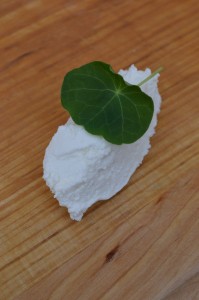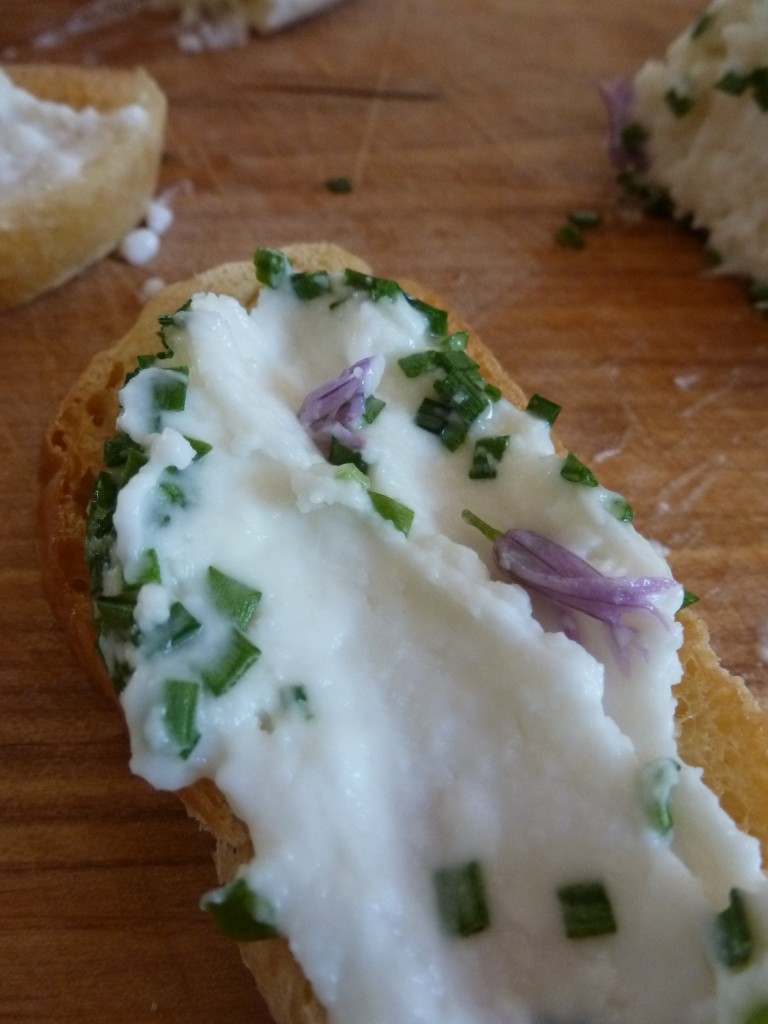Originally posted July 4, 2013. Reposted for Eat Alberta.
 When I was little there were only two types of cheese: cheddar and marble cheddar. This was in Ontario, in the 1990s. Most meals were accompanied by a small plate of pickles and orange cheddar.
When I was little there were only two types of cheese: cheddar and marble cheddar. This was in Ontario, in the 1990s. Most meals were accompanied by a small plate of pickles and orange cheddar.
Anemic, industrial versions of two classic French cheeses were my first glimpses into the wider world of cheese. One was “Brie”, and the other “Goat cheese.” Both were vapid compared to the samples I would eat later in life, but I remember them because they were so different from the blockish, pressed, firm-textured cheddar of my youth. They were both bland and comforting, yet they both had very interesting textures in their own rights: the Brie was like velvety butter, the goat cheese every so slightly crumbly, maybe even a bit chalky as I moved it around with my tongue. Plus, oddly, they weren’t orange.
There are many types of cheese made from goat milk, and they come in countless shapes and colours and textures (Valençay, Sainte-Maure de Touraine, Crottin de Chavignol…) but “goat cheese” in North America usually means a cylinder of snow-white, soft, slightly pasty, tangy cheese.
Making fresh goat cheese at home is extremely simple. It takes about 20 minutes of work, and a lot of waiting.
Fresh Goat Cheese at Home
Master Ratio – 16:1, goat milk to buttermilk, by volume
Ingredients
- 4 L whole goat milk (eg. Fairwinds Farms, Vital Greens, both available at Planet Organic)
- 1/4 cup full fat buttermilk (eg. Fairwind Farms, Avalon, Vital Greens)
- 1/8 tsp liquid calf rennet (eg. Coagulant 300 IMCU, available at Halford’s Hide, just off the Yellowhead)
- 1 tsp kosher salt, approximately
The procedure is as follows.
Inoculate the goat milk with an acidifying culture. This could be regular old buttermilk, as in the recipe above, or a culture sold expressly for making chèvre.
Warm the milk to the incubation temperature of the the culture. Recipes vary widely, with temperatures ranging from 68°F-86°F. The lower end of the spectrum is more common, with slower acid production and a more even curd. I shoot for 70°F, which is about 21°C, which is conveniently the ambient temperature of my kitchen. Even so, I gently heat the milk on the stove, in a heavy pot.
Add rennet and let the dairy coagulate. A very small amount of rennet is used to form a very delicate curd. I use about 1/8 tsp of a liquid calf rennet poetically named Coagulant 300 IMCU, available at Halford’s here in Edmonton. This is less than the amount recommended on the bottle, as the rennet is typically used for firmer styles of cheese.
Now the dairy is left at room temperature for 12 hours, during which time it will acidify and coagulate. Afterwards there will be a clear separation between soft curd and liquid whey, and you will get a clean break when you prod the curd with a knife or curious finger.
Release the whey. For many cheeses “cutting the curd” is a crucial step requiring great care. For chèvre it’s more like “mashing the curd”: I transfer the curd with a big spoon into a colander lined with cheesecloth, then lightly press the curd to moosh it into smallish pieces. A very precise procedure I assure you.
Hang. Gather the ends of the cheesecloth around the curd and secure them with butcher’s twine. Suspend the bundle over a bowl and let drain.
The temperature at which you hang the goat cheese has a surprisingly dramatic effect on the final cheese. Hanging at fridge temperatures produces a very moist cheese, while room temperatures aid in whey drainage and produce a drier, crumbly cheese. I hang at room temperature, at or around 70°F.
You can actually feel the cheese getting firmer as it hangs. I find it takes about 7 hours for the curd to properly drain.
I’ve also found that sometimes, especially when hanging the cheese in a warm, dry kitchen, a skin will form around the curd and prevent drainage of whey in the interior. You can feel this if you palpate the curd. Simply open up the bundle of cheesecloth, break the skin, redistribute the curd, and hang a bit longer.
Salt and Shape.
Transfer the cheese to a bowl and add the salt. The exact amount of salt will vary from batch to batch. Roughly 1 teaspoon for a batch starting with 4 L of goat milk is a good approximation. I just mash the salt into the cheese with a big spoon.
At this point the cheese can be shaped as desired. The classic form for fresh goat cheese is a cylinder. Cut a rectangular piece of plastic wrap and spoon cheese along one of its long edges. Pull the plastic over the cheese and roll to form a cylinder. Pinch the plastic at either end and roll the log of cheese to tighten up the wrapping. Secure both ends with a knot of string, then hang the log in the fridge for at least a day, preferably two, before unwrapping and cutting.
